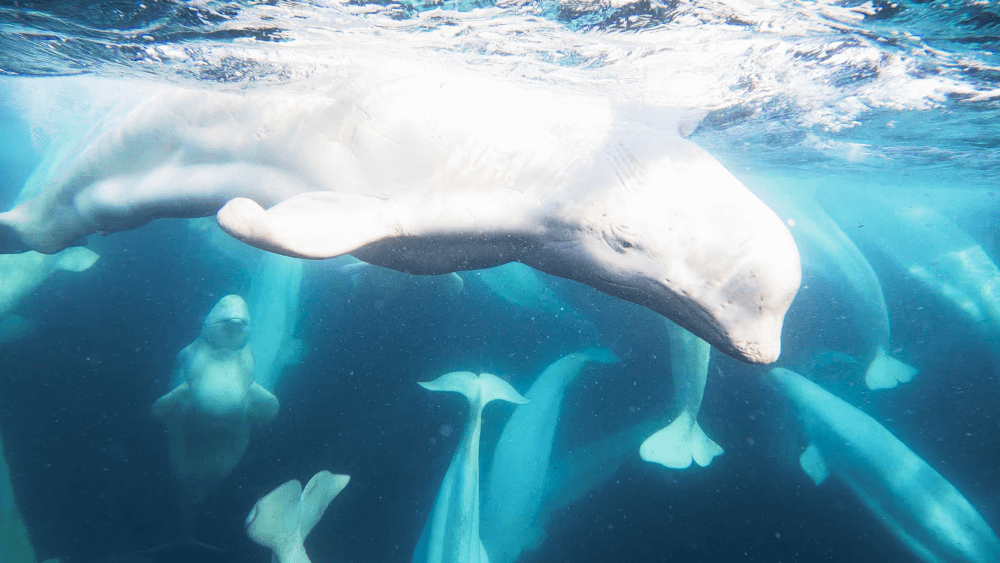BBC’s Frozen Planet II will soon make some of Earth’s frostiest and most remote regions accessible from your living room. The series returns with narrator Sir David Attenborough, who has worked closely with the BBC’s Natural History Unit to bring some of the most eye-opening moments in wildlife filmmaking history to our television screens (remember the epic iguana hatchlings vs. racer snakes sequence?).
It comes 11 years after Frozen Planet first aired, and as such, benefits from a leg up in both technology and scientific advances that have brought us closer to understanding some of the most inaccessible habitats on the planet, from mountaintops to frozen deserts and the iciest depths of the oceans. Here, producer Alex Lanchester gives some insight as to the species and behaviors we can expect to see amidst the ice and snow of Frozen Planet II.
What can people expect from episode one, Frozen Worlds?
It’s a journey from the bottom to the top of the planet. Along the way, we’re revealing the incredible frozen worlds that exist all across it.
Any comical moments?
The Pallas’s cat. It’s the fluffiest cat in the world and we have a comedy sequence about it trying to catch gerbils and messing it up. Its paws get so cold on the snow it has to wave them to get the blood circulating back again. This makes its presence known before it can actually pounce.

To warm itself up after having to endure freezing night time temperatures, a high-casqued chamelon basks in the sun on the high slopes of Mount Kenya. Image credit: Freddie Claire, Frozen Planet II, BBC Studios
Couldn’t help noticing there’s a chameleon among the images, what’s going on there?
We go to Mount Kenya in Africa [in the Frozen Peaks episode] and do a story about a chameleon that can withstand its territory being frozen each night. It’s actually a story about how they give birth and we’ve got very cute, daring baby chameleons that are born up at 4,000 meters, in this world of freeze-thaw that cycles between the two.
Any other impressive behaviors?
Killer whales “wave-washing” … This is an incredible piece of behaviour where the killer whales come together as a family. Because the seals are hauled up on pieces of ice, they worked out a hunting strategy where they create a wave and wash the seal off the ice.

As the dramatic sequence shows, ice islands can be shattered by orcas’ synchronized hunts. Screen grab credt: Frozen Planet II, BBC Studios
It’s one of the most sophisticated hunting techniques there is. They calculate the number of seals there are, the size of the wave depending on how far away they are, the number of whales needed to create it, etc.
Not dissimilar to elephants, the knowledge of how to hunt and the best places to hunt is stored in the matriarch who runs the family and can get to over 100 years old. She’s utterly crucial to the whole pod’s survival. We follow her and see how the others must learn from her.
Did someone mention twerking pandas?
[In Frozen Peaks (episode three)] we have a panda that looks distinctly like it’s twerking. [Capturing] that was a real effort, you know, three years’ camera tracking up in the mountains in [Wolong National Nature Reserve] in China.
The twerking behaviour is the male pandas. They like to scent mark their territories for both other males and females. Each male tries to get their scent higher and higher up the trees. They’re effectively having peeing contests, but they do it by doing a handstand and because the scent mark is on their bottoms’ they’re constantly shimmying their bottoms higher and higher. It looks like some kind of bizarre dance craze.
You had us at twerking pandas.

The series includes footage of beluga whales trapped in an ice hole 20 miles from the next open water in Eastern Russia. Screen grab credit: BBC Studios
The series includes many species highlights, from the playful side of polar bears to an entrapment of beluga whales (the likes of which haven’t been caught on camera for over two decades) and even some series highlights we’re not allowed to discuss just yet.
The incredible roster of animals and behaviors, as well as the poignant reminder it brings about the importance of Earth’s icy spaces – many of which are under threat from the climate crisis – perhaps explains why Sir David Attenborough himself reportedly described the series as “the most important thing” he’s been involved with.
Don’t miss Frozen Planet II available on BBC One and iPlayer from September 11.
Source Link: Frozen Planet II: Twerking Pandas And Waving Pallas's Cats Among New Series Highlights